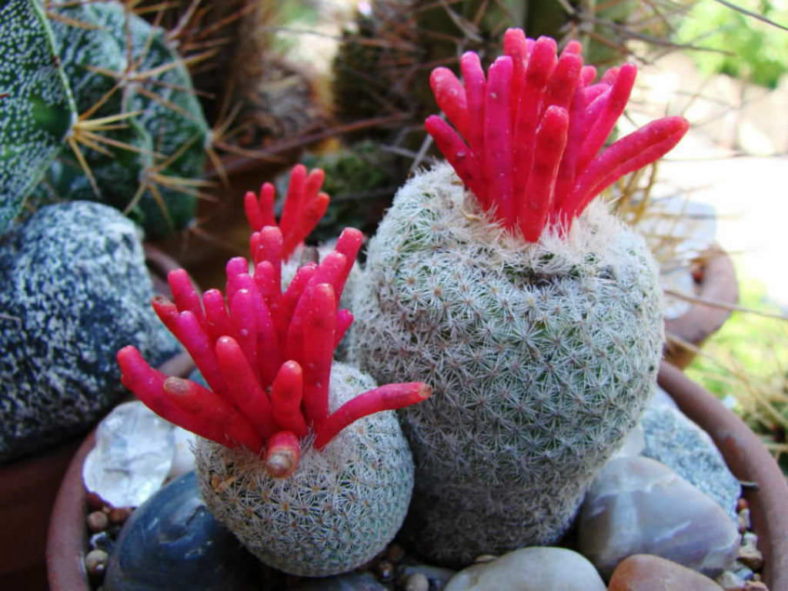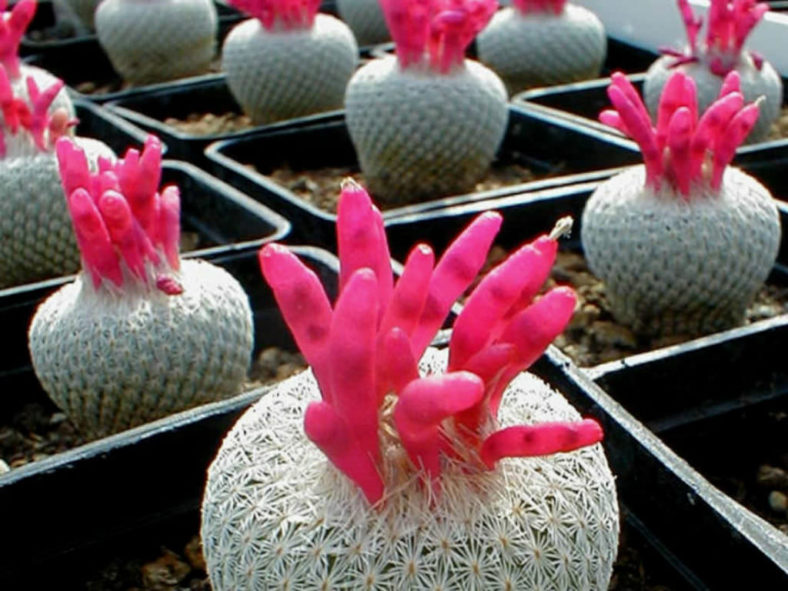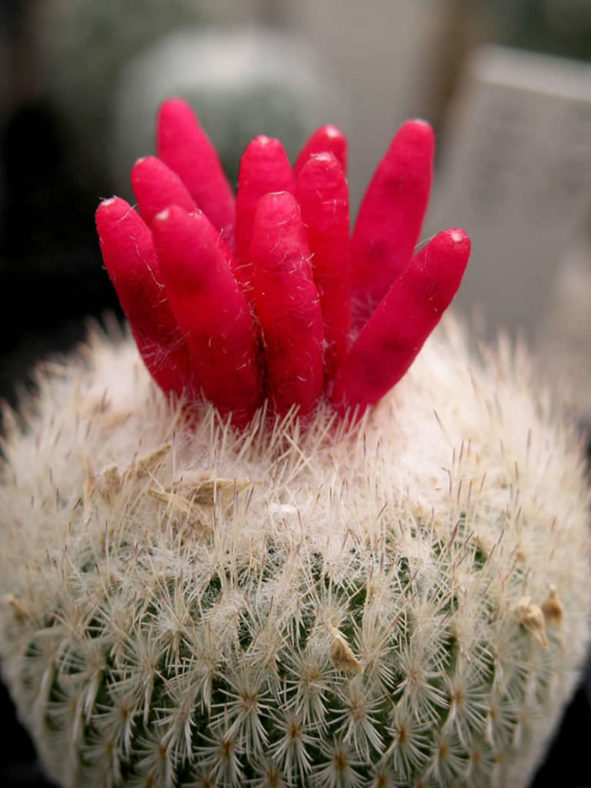Scientific Name
Epithelantha micromeris (Engelm.) F.A.C.Weber ex Britton & Rose
Common Name(s)
Button Cactus, Ping Pong Ball Cactus
Synonym(s)
Cactus micromeris, Cephalomamillaria micromeris, Echinocactus micromeris, Mammillaria micromeris
Scientific Classification
Family: Cactaceae
Subfamily: Cactoideae
Tribe: Cacteae
Subtribe: Cactinae
Genus: Epithelantha
Origin
Epithelantha micromeris is native to the United States (Arizona, New Mexico, and Texas) and northeast Mexico.
Description
Epithelantha micromeris is a small cactus with a spherical, egg-shaped, or short cylindrical, usually solitary stem covered with clusters of spines. The stem can grow up to 2 inches (5 cm) tall and up to 1.6 inches (4 cm) in diameter. The tubercles are hemispheric to short cylindrical, measuring up to 0.25 inches (0.3 cm) long. They are arranged around the stem in spiral rows, and each is tipped with an areole that bears 20 to 40 spines in 1 to 3 series. The spines are grayish or purplish-white with brown bases, collectively appearing as a brown spot at the center of each cluster. The density of the spines gives the stem the illusion of being ashy gray and rough in general.
The flowers are small, pink to white, rarely yellow, and appear partially obscured by longer spines at the stem tip from late winter to early spring. The attractive edible fruits are bright red, narrowly cylindrical, and contain several black seeds.

Hardiness
USDA hardiness zones 8b to 11b: from 15 °F (−9.4 °C) to 50 °F (+10 °C).
How to Grow and Care
To encourage better flowering, allow the plants to enjoy a cooling period in the winter and suspend watering. Unlike many other cacti, which use their ribs as storage devices, Mammillaria feature raised tubercles, from which spines emerge. When you water, the tubercles expand to allow for increased water storage. The flowers emerge from the axils of these tubercles on the previous year's growth, which accounts for their interesting halo effect. The cactus mustn't be exposed to prolonged dampness and sitting water. Never let your cactus sit in a dish of water. Lastly, ensure you fertilize during the growing season for the best results.
Repot as needed, preferably during the warm season. To repot Mammillaria, ensure the soil is dry before repotting, then gently remove the pot. Knock away the old soil from the roots, removing any rotted or dead roots. Treat any cuts with a fungicide. Place the plant in its new pot and backfill it with potting soil, spreading the roots as you repot. Leave the plant dry for a week or so, then begin to water lightly to reduce the risk of root rot.
Learn more at How to Grow and Care for Mammillaria.
Subspecies and Forms
Links
- Back to genus Epithelantha
- Succupedia: Browse succulents by Scientific Name, Common Name, Genus, Family, USDA Hardiness Zone, Origin, or cacti by Genus
Photo Gallery
Click on a photo to see a larger version.



